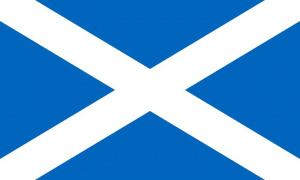Language/Scottish-gaelic/Culture/Festivals-and-Celebrations
| ◀️ Traditional Music and Dance — Previous Lesson | Next Lesson — Literature and Poetry ▶️ |
Scottish Gaelic culture is rich in festivals and celebrations that reflect its history, traditions, and customs. These festivals often involve music, dance, food, and drink, and are an important part of Scottish Gaelic identity. In this lesson, you will learn about some of the major festivals and celebrations in Scottish Gaelic culture, such as Hogmanay and the Highland Games.
Hogmanay
Hogmanay is the Scottish Gaelic word for New Year's Eve. It is a major celebration that takes place across Scotland and is often marked by fireworks, parties, and the singing of Auld Lang Syne. Hogmanay has its roots in the pagan winter solstice celebrations that were held by the Vikings and the Celts, and it has been celebrated in Scotland since the Middle Ages.
One of the most famous Hogmanay celebrations is the Edinburgh Hogmanay Street Party, which attracts tens of thousands of people from all over the world. The party features live music, food, and drink, and culminates in a spectacular fireworks display at midnight.
In many Scottish Gaelic communities, Hogmanay is also marked by the tradition of first-footing, where people go from house to house, bringing gifts and wishing their neighbors a happy New Year. The first person to cross the threshold of a house in the New Year is said to bring good luck, and it is considered particularly lucky if the first-footer is a tall, dark-haired man.
Up Helly Aa
Up Helly Aa is a fire festival that takes place annually in Lerwick, the capital of the Shetland Islands. It originated in the late 19th century as a way for local men to celebrate their Viking heritage and has evolved into a spectacular event that attracts visitors from around the world.
The highlight of Up Helly Aa is the torchlit procession, where hundreds of men dressed in traditional Viking costume parade through the streets, carrying flaming torches. The procession ends with a replica Viking longship being set on fire, accompanied by a fireworks display.
Highland Games
The Highland Games are a series of athletic events and competitions that take place throughout Scotland and are a celebration of Scottish Gaelic culture and tradition. The games feature events such as caber tossing, hammer throwing, and tug-of-war, and also include traditional Scottish music, dance, and food.
The origins of the Highland Games can be traced back to the medieval period, when clan chiefs would gather their followers for sporting competitions as a way of keeping them fit and ready for battle. Today, the Highland Games are a popular tourist attraction and are held in cities and towns across Scotland.
Beltane
Beltane is an ancient Celtic festival that marks the beginning of summer. It is celebrated on May Day, and is a celebration of fertility, new beginnings, and the reawakening of the natural world. Beltane is traditionally celebrated with bonfires, music, and dancing, and is often marked by the crowning of a May Queen.
Although Beltane is not widely celebrated in modern Scotland, there are still some communities that observe the festival. One of the most famous Beltane celebrations takes place in Edinburgh, where the Beltane Fire Festival features a torchlit procession and a dramatic reenactment of ancient Celtic rituals.
Conclusion
Festivals and celebrations are an important part of Scottish Gaelic culture, and provide a window into the history and traditions of this fascinating culture. From the fireworks and parties of Hogmanay to the athletic feats of the Highland Games, these festivals offer a glimpse into the heart and soul of Scottish Gaelic identity.
Other Lessons
| ◀️ Traditional Music and Dance — Previous Lesson | Next Lesson — Literature and Poetry ▶️ |

